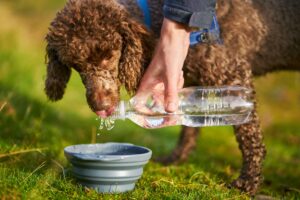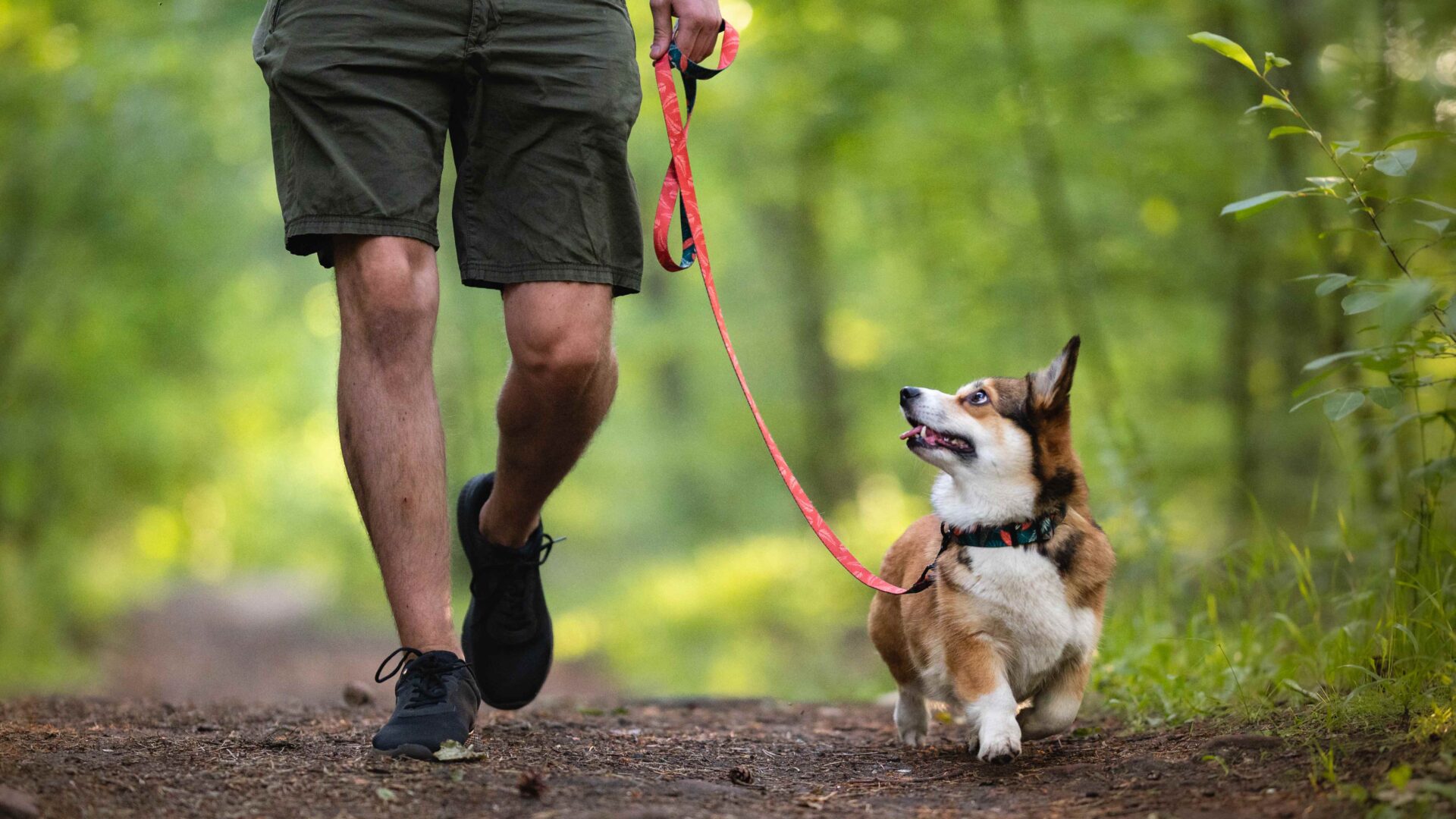Last Updated: 05/08/25
As the days get longer (and hopefully warmer), it’s important to make sure that our canine friends stay safe.
On this page:
- Why do dogs develop heatstroke?
- Are some dogs more at risk of getting heatstroke than others?
- What are the symptoms of heatstroke?
- How do I prevent my dog from getting heatstroke?
- What to do if you think your dog may have heatstroke?
- Heatstroke first aid tips
Why do dogs develop heatstroke?
Our dogs can develop heatstroke when their body temperature goes above the normal range.
Dogs aren’t able to sweat in the way that humans do and instead can only sweat through their paws, so they have to rely more on panting to cool down.
As most dog breeds have a fur coat, they can easily get hot and in certain circumstances this can cause a quick and very serious decline in their health.
Common causes of heatstroke in dogs include overheating during exercising, simply being outside (even just sitting down) in hot weather and being in a hot car.
Heatstroke can unfortunately be life-threatening, even with veterinary treatment, so it’s vital to take proper care of our pets during summer.

Are some dogs more at risk of getting heatstroke than others?
While any dog can get heatstroke, there are certain factors that can increase a dog’s level of risk.
For example, being young, elderly, overweight, a large breed or a brachycephalic (flat-faced) breed increases the risk of heatstroke.
Flat-faced (brachycephalic) breeds are especially vulnerable, as their type of skull and respiratory tract reduces their ability to cool themselves down.
What are the symptoms of heatstroke?
Symptoms of heatstroke can include:
- Excessive panting, being unable to settle and seeming agitated.
- Drooling and foaming from the mouth.
- Shaking.
- Being confused.
- Bright red gums.
- Weakness or lethargy and collapsing – having less energy, a reluctance to continue walking, progressing to complete collapse and being unable to stand.
- Struggling to breathe.
- Vomiting – diarrhoea.
- Seizures.

How do I prevent my dog from getting heatstroke?
There are a number of ways that you can help to prevent your dog getting heatstroke.
- Avoid taking dogs outside during the warmest part of the day.
- Exercise your pet early in the morning or late in the evening. Remember, it’s better for your dog to miss a walk than to risk them getting heatstroke.
- Don’t walk your dog on hot surfaces such as sand, artificial grass or paths/tarmac. You can test these first by placing your hand on them; the surface should be comfortable to touch with the back of your hand for over five seconds.
- Avoid placing coats, jumpers and jackets on your dog during warm weather.
- It may be better to use a harness instead of a collar.
- Plan trips to ensure that you will have access to shade.
- Always provide fresh drinking water; carry a bottle and travel bowl wherever you go.
- Use cool mats and neckerchiefs designed to cool your dog.
- Keep your dog at a healthy weight.
- If applicable, plan their grooming trips to coincide with the warmer weather. Ask your groomer to cut them shorter than usual, or increase your brushing routine to remove any buildup of old coat during warmer months.
- Always be aware of the outdoor temperature, the activities you will be doing and make sure you know where the closest vet practice is in case of an emergency.
- NEVER leave your dog in the car on a warm day, even for a few minutes.
White-haired dogs and those with fine, thin or no hair are at greater risk of getting sunburnt, and it’s important to remember to protect exposed areas such as the ears, nose and tummy on all dogs using a pet-safe sun cream.

What to do if you think your dog may have heatstroke?
If you think your dog has heatstroke, please contact your veterinary practice immediately.
Time is crucial when dealing with heatstroke, and your dog will often need rapid emergency treatment.
Contact your vet urgently for advice. If heatstroke is deemed likely, we will ask you to try to cool your dog down with water before you travel to the practice.
Heatstroke first aid tips
- Stop your dog from playing or walking and move them somewhere cool, e.g. into the shade or indoors.
- Keep your dog calm.
- Offer them water to drink.
- Start cooling them down. If they are young, conscious and in good health, immerse them (with their head above the water) in cold water, e.g. in a paddling pool. If this is not possible, pour plenty of cold water over them.
- If your dog is elderly or in poor health, it may be safer to spray them down with cool water (avoiding their face) and get them by a fan or air conditioning system. You can also place ice wrapped in a tea towel in their groin and armpits.
- If at any point your dog starts shivering, stop cooling them.
- Do not place a wet towel over your dog, as this may trap heat and can actually raise their temperature rather than cooling them down.
- Keep the car cool on your journey to the vets by opening the windows or using the air conditioning.
For further advice, please reach out to your local VetPartners practice.

